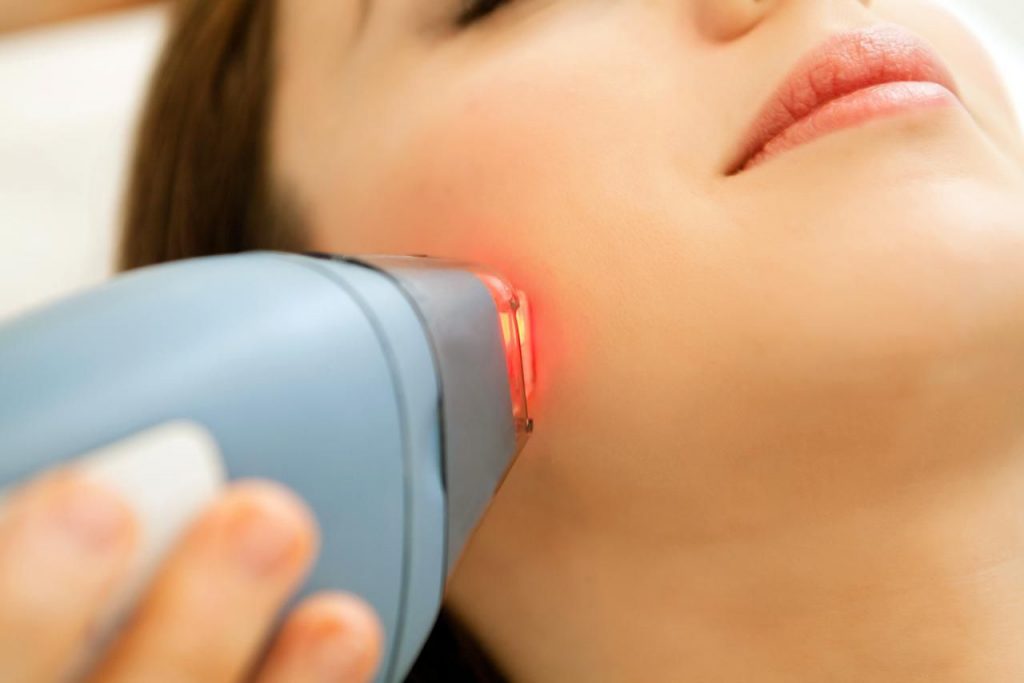Laser treatment for face is a process that uses lasers to treat various skin conditions. It can be used to reduce the appearance of fine lines, acne scars and wrinkles by reducing their size and severity. There are several different types of lasers used in laser treatment for face depending on the condition being treated as well as your own skin type.
Is There Any Side Effect Of Laser Treatment For Face?
Laser treatment for face is safe, but there are some side effects. Side effects depend on the type of laser and the area being treated. The most common side effect is redness, swelling and pain at the treatment site that may last up to two weeks after you’ve finished your appointment. Blistering can also happen if you’re allergic to the numbing cream used during laser treatments (it’s rare).
Side effects are usually temporary but can include:
- Paresthesia (tingling or tingling sensation) in your hands and feet after a session
- An increased sensitivity to light or sounds
- Difficulty sleeping due to discomfort
How Many Sessions Does It Take For Laser Treatment For Face?
How many sessions will it take?
The time it takes to see results depends on the severity of your skin condition, how often you can get to the clinic and how much money you are willing to spend. If you have acne scars or pigmentation issues, then one session may not be enough. However, if you have only mild discoloration (like freckles), then one session should suffice.
What To Do After The Laser Treatment For Face?
After your laser treatment, you should:
- Don’t touch your face. Your skin will be sensitive and can become red or blotchy. It is best to avoid touching the treated area for 24 hours after the procedure.
- Don’t apply makeup for at least 24 hours after a 30-minute treatment. This means that if you have had one treatment, wait until day two before putting on makeup again! As long as there are no other problems with your skin and no signs of inflammation (redness), then it’s fine to apply moisturizer directly after having this kind of laser treatment done on its own; however, if there is any redness present or if there are any other changes in appearance due to inflammation associated with this type of laser therapy then waiting longer before putting on any cosmetics may be beneficial so as not cause more harm than good overall.”
What Are The Benefits Of Laser Treatment For Face?
Laser treatment for face: What are the benefits of laser treatment for face?
Laser therapy is a noninvasive method that uses high-intensity light to treat conditions such as acne scars and wrinkles. This procedure can also be used to improve the appearance of your skin, increase collagen production and reduce sun damage. You may have heard about this popular treatment before but what do you actually know about it? Here’s everything you need to know about laser treatments for your face:
How Long Does It Take To See The Results Of A Laser Facial?
You’ll need to wait a couple of weeks for your face to fully heal. This is because the laser treatment will cause redness and dry skin, which takes time for your skin to repair itself.
The speed at which you see results depends on how many sessions you have and the type of laser used. The more sessions, the faster you will see results.
Depending on your skin type, it may take longer than two weeks before you see improvements in acne scarring or wrinkles—but remember that this does not mean that no progress has been made!
How Much Time Is Required To Recover From A Laser Facial?
The recovery time for a laser facial depends on the type of laser used and how many sessions you have. With milder lasers, like fractional CO2 and Nd:YAG, the recovery time can be anywhere from a few hours to a few days. With more intense lasers such as IPL or Erbium:YAG, the recovery time can take longer depending on how much damage is done to your skin’s collagen network during treatment.
The best thing you can do when it comes to recovering from your procedure is stay hydrated with plenty of water so that your skin doesn’t dry out too quickly; however, it’s also important not to overdo it with alcohol-based drinks because this could cause irritation or redness in areas where there was previously no pigment (which would make them appear darker).
Which Type Of Skin Is Suitable For Laser Treatment For Face?
Laser treatment for face can be used on all skin types. It has been found that the laser treatment for face is safe and effective in treating a number of problems like wrinkles, acne scars and more.
What Are The Different Types Of Lasers That Are Used In A Laser Treatment For Face?
There are a variety of lasers that can be used for treatment of freckles and sun spots. The most common types include: CO2 laser, Erbium laser, Nd:YAG and Ruby. Each type has its own benefits and drawbacks when it comes to treating freckles and sun spots on the face.
Laser Treatment For Face Can Be Used To Treat A Number Of Problems Like Wrinkles, Acne And More
Laser treatment for face can be used to treat a number of problems like wrinkles, acne and more. In fact, laser treatments are becoming a popular alternative to surgical procedures because they don’t require surgery or anesthesia.
The laser light penetrates deep into the skin’s surface and destroys collagen in the dermis layer of your skin (the second layer from the top). This helps to reduce fine lines by removing excess collagen from beneath them, which is why it’s so effective at reducing wrinkles on the forehead or around eyes.
How does it work? When you apply an incredibly high-powered beam of light onto your skin—which causes burns in just seconds—collagen molecules are destroyed by their absorption by this wavelength. The result is smoother looking skin that feels softer too!
Conclusion
In conclusion, laser treatment for face is a safe and effective way to get rid of wrinkles, acne scars and other signs of aging. It can be done in just one session with minimal downtime as well.
Sources:
- https://www.ncbi.nlm.nih.gov/pmc/articles/PMC7118506/
- https://www.ncbi.nlm.nih.gov/pmc/articles/PMC6188454/













